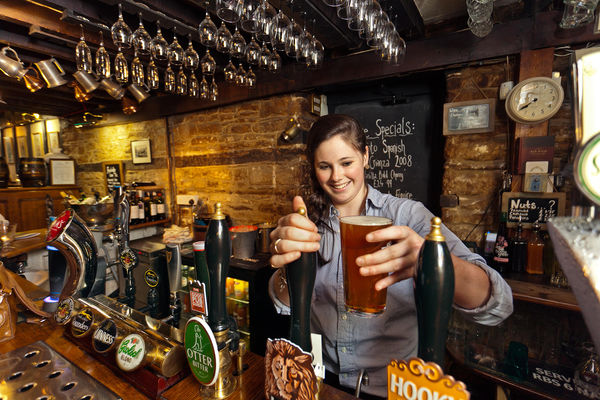Comfort and Company in Europe’s Cafés and Pubs
By Rick Steves
After a busy day in Vienna, I like to retreat to a striped velvet couch at the renowned Café Hawelka. The dark interior has changed little since the café's heyday around the turn of the last century, with walls adorned in paintings by struggling artists (who couldn't pay for coffee) — and furniture infused with their smoke. This creaky Viennese institution, where intellectuals like Leon Trotsky once stewed, has become my local living room in Austria.
All over Europe, I seek out cozy establishments like this to relax, nurse a drink, and strike up a conversation. Delving into the café culture and historic pubs of the world's most elegant cities is an enriching way to get some distance from the sightseeing crowds, lighten up a museum-heavy itinerary, reflect on my travels, and alleviate homesickness.
Vienna's Café Hawelka is the creative epicenter for artists, poets, and revolutionaries. Old man Hawelka himself may have served a cappuccino (called a Mélange here) to Trotsky, Stalin, Klimt, or Freud — all of whom were causing a stir in Vienna in the early 1900s. I ponder how, in the last days of Europe's family-run empires (essentially all of which died with the end of World War I), Vienna was a place of intellectual tumult — and coffeehouses like this were the social backdrop.
Across town in Vienna, the iconic Café Sperl dates from 1880 and is still furnished identically to the day it opened — from the coat tree to the gold chandeliers to the ornately upholstered chairs. An afternoon in this cultural treasure feels like an afternoon among the city's 19th-century creative minds and military elite. With a wide selection of newspapers, and take-all-the-time-you-want charm (despite the famously grumpy waiters), every Viennese coffeehouse offers its own individual character and a welcoming space oozing with history.
In Venice, the venerable Caffè Florian — one of the first places in Europe to serve coffee — is perfect for a sightseeing break. Sitting elegantly on St. Mark's Square, Caffè Florian has been a popular spot for a discreet rendezvous since 1720, and everyone from Lord Byron to Woody Allen has paid too much for a drink here. Tourists stake out tables on the square to people-watch and enjoy the Caffè Florian orchestra, which performs each hour with a repertoire including classical, jazz, operetta, and Venetian. But for elegance and ambience, romantics sit inside to appreciate richly decorated rooms, each with a historic or artistic theme, such as the "Room of the Illustrious Men," which features portraits of great Venetians from Marco Polo to Titian.
You'll find more cozy comfort in Amsterdam's bruin (brown) cafés. These after-hours hangouts get their name from their dark hardwood interiors and nicotine-stained walls, embracing the gezellig (cozy) quality that the Dutch hold dear. Don't confuse these with "coffeeshops," where the Dutch gather to buy and smoke marijuana (coffeeshop windows display plants and Rastafarian colors). Brown cafés project a more elegant atmosphere and usually specialize in beer, while others focus on Dutch gin (jenever); most also serve wine and coffee. Drop in, linger over a drink, and see if you can pick out the regulars. Whether in a brown café jammed with noisy patrons or one that's sleepy and mellow, you'll find a convivial living room.
In London, the pub is the heart of the people's England, where all manner of folks have, for generations, found a home away from home. In class-conscious Victorian times, traditional pubs were divided into sections by elaborate screens (now mostly gone), allowing the wealthy to drink in a more refined setting, while commoners congregated on the pub's rougher side. These "public houses" became comfortable places for groups and clubs to meet, friends and lovers to rendezvous, and families to get out of the house at night. In London, my favorite pub scene is at South Kensington's Anglesea Arms. Set in a beautiful Georgian building lined with flower boxes spilling color around communal picnic tables, the place is filled with musty paintings and old-timers, dogs wearing Union Jack vests, and a long line of tempting tap handles. Today, timeworn taverns such as the Anglesea Arms are national treasures that still make a cheery refuge from the daily grind or a brief escape for a tired traveler.
After taking in the sights of Europe's magnificent cities, look for an inviting café or pub where you can soak in the locals' enthusiasm for their national heritage and traditions. Slow down and experience a good cup of coffee or local beer — and make yourself at home. You'll return with a broader perspective, some interesting stories, and maybe even a new friend or two.

